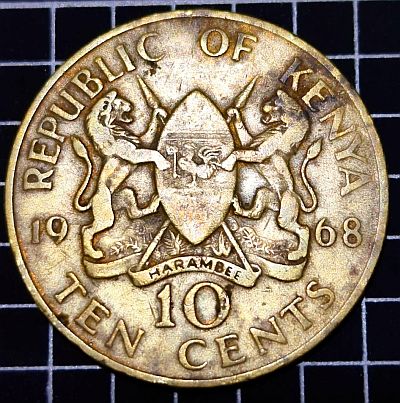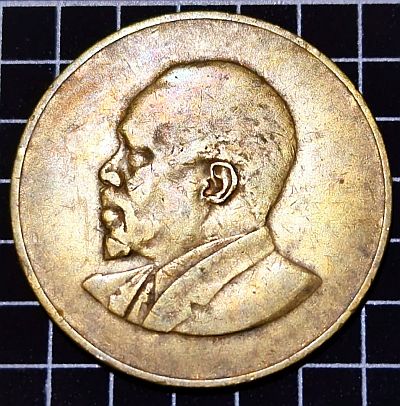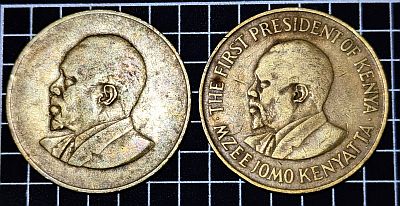An anepigraphic bust of the president of a young nation
Kenya
Kenya is named after Mount Kenya, the second tallest mountain in Africa. The Kikuyu people referred to it as Kirinyaga or Kerenyaga, meaning “mountain of whiteness” because of its snow-capped peak. When the British colonised the country, they could not pronounce the name, and it became “Kenya”.
Originally inhabited by hunter-gatherers, as all of eastern Africa was, in Western Kenya, near the Uganda border, there are rock paintings at Kakapel village attributed to the Twa peoples dated up to 4,000 years ago. The Twa are said to be the aboriginal inhabitants of the forest before the advent of agriculture, and are still found around Africa.
Visitors from Europe: Portugal, Greece, the Roman Empire, India and Arabia visited Kenya as early as the first century A.D. While most returned, some stayed and intermarried, giving rise to a new Swahili culture along the coast.
The Portuguese arrived in 1498, on their way to the East Indies. Over the next hundred years, in their quest to control the Indian Ocean Trade, they invaded several coastal towns and city states along the coast.
This lasted 200 years until a combination of local nationalism and Omani Arabs kicked them out. The Oman sultan moved his capital to Zanzibar and ruled the entire east African coastline until the arrival of the British rule during the scramble for Africa.
The Imperial British East Africa Company was setup to administer the new “East Africa Protectorate” setup at the end of the 19th century. East Africa and the Colony of Kenya lasted until independence in 1964.
Obverse

The obverse contains the country name above, value (in numbers and words) below, and the coat of arms of Kenya taking up the majority of the face of the coin.
We gave a quick description of the coat of arms covering the 40 Shillings coin of 2003: Kenya’s coat of arms features two gold lions, one on either side of a shield with two crossed spears. The lions symbolize Kenya’s wildlife and the courage of the people of Kenya to defend their country. The shield and the spears symbolize unity and defence for freedom. On the shield, the rooster holding an axe portrays authority, the will to work, success, and the break of a new dawn.
The ribbon text reads “Harambee” which means “in the spirit of togetherness” in Swahili. My first introduction to that word was the A Capella group of the same name. While not Kenyan, they are quite good. Here is where I saw them, on “Battle of the Choirs“.
Reverse

The reverse is anepigraphic, with no text. There is only a bust of president Mzee Jomo Kenyatta facing left.
Mzee Jomo Kenyatta was the President of Kenya from independence in 1963 to his death in 1978, serving first as Prime Minister (1963–64) and then as President (1964–78).
Kenyatta was revered and respected. Described as “a statesman of one of Africa’s stable and strongest economies, who Kenyans likened to (founding US President) George Washington”.
As well as being featured on currency during his reign, Kenyatta was remembered as “The first President of Kenya” on the nations coins from 2005 – 2010. This was the same title used on coins from 1969 – 1973. Only the 1966 – 1968 coins did not feature text around the bust:

(Reverse of 1968 10 Cents left, with 1969 10 cents with legend right)
Since 1966, Kenya has used the “Shilling” with one Shilling being made up of 100 Cents. Today, 1 US dollar is worth 129 Kenyan shilling. What is your favourite anepigraphic coin with a portrait but no text? I actually can’t think of too many others, so do let us know!


Leave a Reply